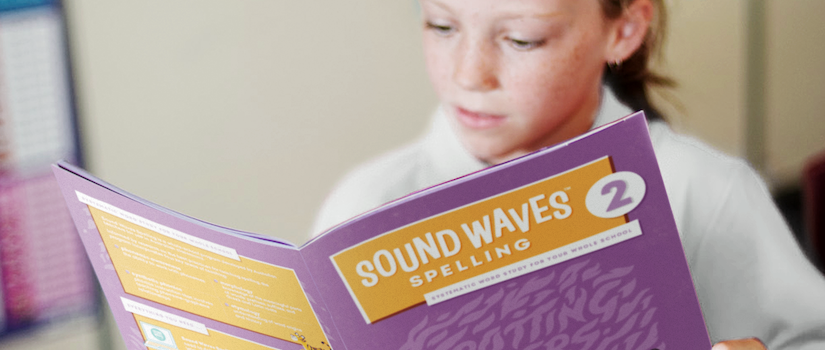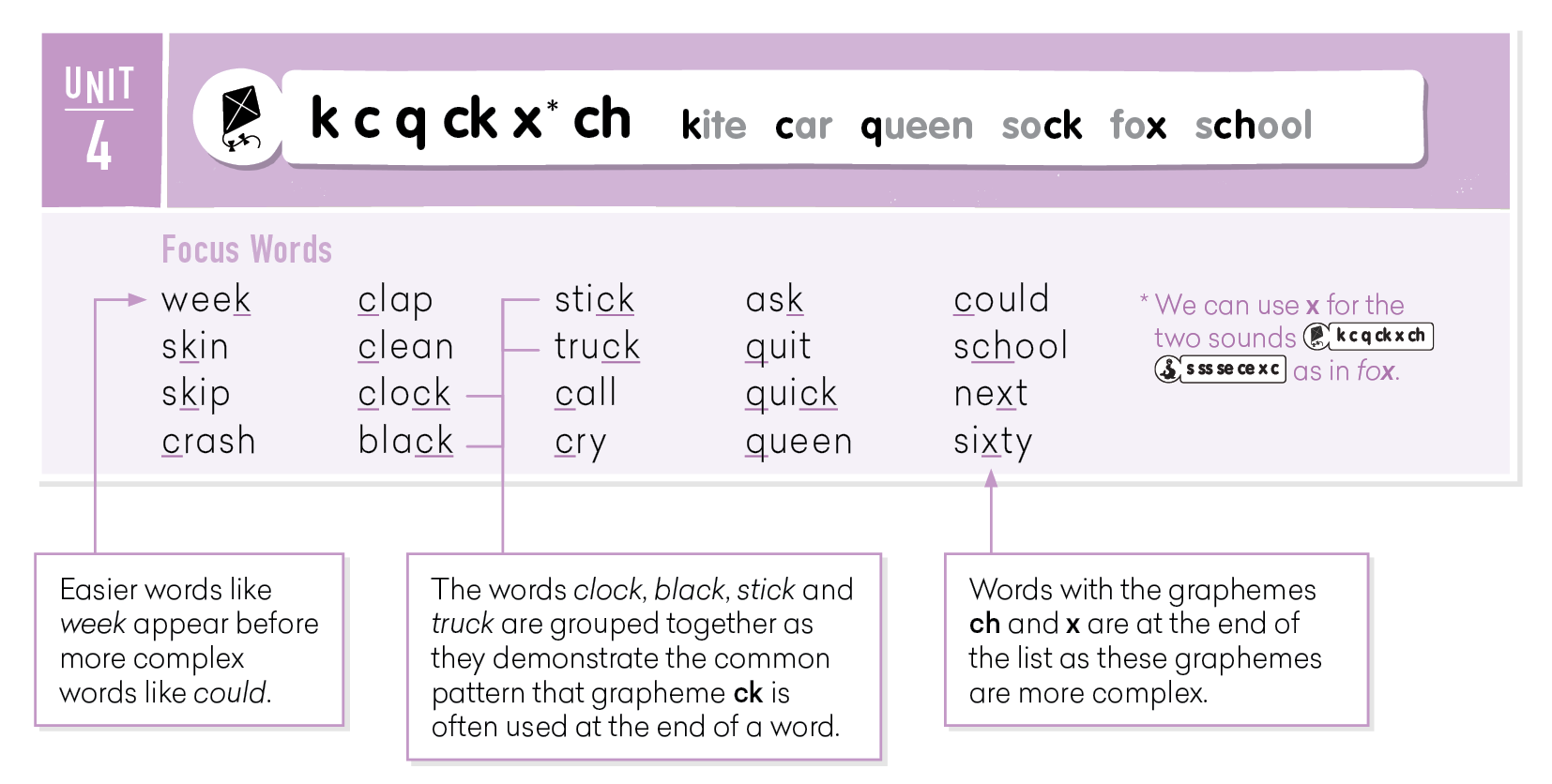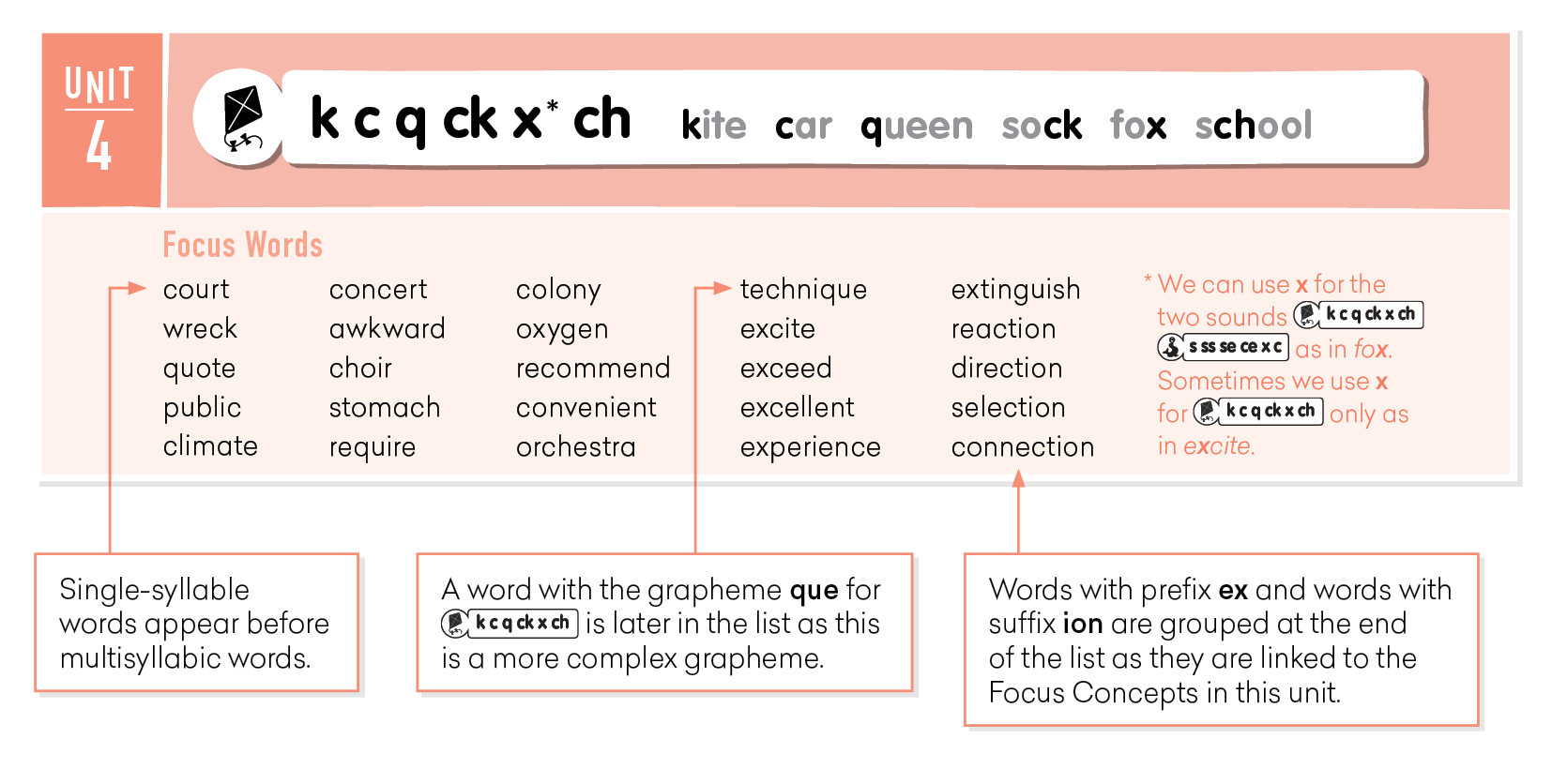Articles & Videos
All about Focus Words
Categories
Subscribe to our newsletters
Receive teaching resources and tips, exclusive special offers, useful product information and more!
All about Focus Words
Sound Waves Literacy 30/5/22

When it comes to spelling, selecting words that are worth focusing on is crucial to success. Every sound unit in Sound Waves Literacy includes a curated set of Focus Words. There’s more than meets the eye with these seemingly humble words – let’s unpack what Focus Words are, why they were chosen, how they are used in lessons and more!
What are Focus Words?
Focus Words are a carefully selected set of words that contain the focus phoneme studied in a given sound unit. You’ll use these words to introduce, demonstrate and foster knowledge about phoneme–grapheme relationships. These words include a variety of graphemes in a range of positions.
Focus Words contain a mix of tier one, two and three vocabulary so students are exposed to a range of words. Tier one words are high-frequency words students encounter in everyday life, such as jump, said, because and through. Tier two words are less commonly encountered words but they are useful across many subject domains, and include words such as cycle, government, organise and research. Tier three words are considered technical vocabulary, and include words such as amphibian, lava and bacteria. The range of Focus Words not only demonstrates phoneme–grapheme relationships but also supports students’ vocabulary development.
What are some misconceptions about lists of words?
Lists of spelling words can sometimes have a bad reputation. Usually, this stems from the use of traditional spelling lists of unrelated words students are encouraged to memorise. Memorisation of words doesn’t support long-term recall, doesn’t assist students in understanding how words work and doesn’t provide the ability to transfer knowledge of spelling into writing.1 2
It’s important to understand that Focus Words are not designed to be a list students memorise. It’s equally important to understand that Focus Words will make up only a small percentage of the words students will need to be able to spell by the time they reach adulthood. The aim is to use Focus Words as a tool for students to gain understanding of phoneme–grapheme relationships and patterns they can then apply to a greater number of words.
How were the Focus Words curated?
Each set of Focus Words is displayed in a logical order. Single-syllable words precede multisyllabic words, and common phoneme–grapheme relationships precede complex or unusual phoneme–grapheme relationships. In Years 5–6 the Focus Concept words are also conveniently grouped at the end of each set.
Let’s see how some of these organising principles apply to the Focus Words for the ![]() unit in Year 2 and Year 6.
unit in Year 2 and Year 6.
Year 2 Example

Year 6 Example

How are they beneficial to learning?
Sets of curated words such as Focus Words help students understand the English spelling system. Each set of Focus Words illustrates a range of different phoneme–grapheme relationships and also demonstrates morphology principles. This allows students to learn how words work.
Using the Focus Words, students can:
Identify the graphemes used to represent the focus phoneme.
For example, ![]() can be represented by ng as in sing, n as in blink or ngue as in tongue.
can be represented by ng as in sing, n as in blink or ngue as in tongue.
Investigate the common position of the focus phoneme in words.
For example, ![]() never starts a word. It is commonly found at the end of words, such as ring, bang and strong.
never starts a word. It is commonly found at the end of words, such as ring, bang and strong.
Learn how the sounds that come before or after the focus phoneme can influence grapheme choice.
For example, ![]() is often represented by the grapheme n if it comes before
is often represented by the grapheme n if it comes before ![]() or
or ![]() , like in donkey, anchor, finger and language.
, like in donkey, anchor, finger and language.
Understand morphemes within a word.
For example, in the word extract the prefix ex means out and the Latin root tract means pull. Extract literally means to pull out.
Comprehend irregular phoneme–grapheme relationships.
For example, the word said is spelled with grapheme ai for ![]() .
.
When will you use them in lessons?
Lesson 1 in every sound unit includes a structured approach for students to interact with and investigate the Focus Words in a variety of ways.
Read and Sort the Focus Words
Use this step to model correct pronunciation and identify the grapheme representing the phoneme. This crucial step gives students the opportunity to read, discuss and investigate the graphemes in each word.
Play Find a Word
Find a Word creates the opportunity to discuss unusual elements and the meanings of the Focus Words. Find a Word clues also ask students to demonstrate phonemic awareness and vocabulary knowledge. Students are prompted to consider sounds, graphemes, definitions, antonyms, synonyms or other Focus Concepts. For example, a Find a Word clue that asks students to find words ending with ![]() could lead to a discussion about how the grapheme ck for
could lead to a discussion about how the grapheme ck for ![]() follows a short vowel sound in each relevant Focus Word.
follows a short vowel sound in each relevant Focus Word.
Segmenting practice
Segmenting words solidifies the connection between the phoneme and the grapheme representing it. This fosters the ability to recognise words automatically (a process called orthographic mapping). As part of Lesson 1, you will explicitly model segmenting some of the Focus Words (either by hand on a whiteboard, or using the segmenting tool) before students practise segmenting independently. In Years 1–2 students have opportunities to segment words within the Student Book activities. In Years 3–6 students segment all the Focus Words using the dedicated segmenting sheets.
Students also have opportunities to work with the Focus Words throughout the week, whether that be in the Student Book activities, during Focus Concept lessons, or using the resources in the Extra Games and Activities section of the unit.
So there you have it – the Sound Waves Focus Words are much more than a simple list. They are research-informed, rigorous and have been carefully selected to help students achieve spelling success.
References
- Hempenstall, K 2018, Feel like a spell? Effective spelling instruction, National Institute for Direct Instruction, https://www.nifdi.org/news-latest-2/blog-hempenstall/390-feel-like-a-spell/↩
- Westwood, P 2014, ‘Spelling: do the eyes have it?’, Australian Journal of Learning Difficulties, 20(1), 3–13, https://doi.org/10.1080/19404158.2014.921632. ↩